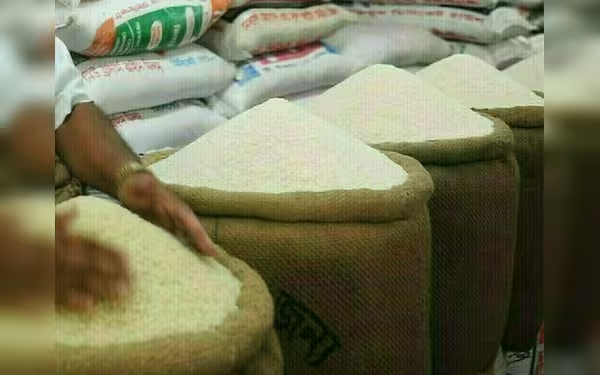Wednesday, November 27, 2024 04:35 PM
Thai Rice Prices Surge, Indian Rates Steady Amid Market Fluctuations
- Thai rice prices reach one-month high due to demand.
- Indian rice prices remain near 15-month low.
- Vietnam's rice exports show signs of slowing demand.
 Image Credits: brecorder
Image Credits: brecorderThai rice prices hit a one-month high while Indian rates remain steady near a 15-month low, reflecting market dynamics in Asia.
In recent weeks, the rice market in Asia has shown significant fluctuations, particularly with Thai and Indian rice prices. Thai rice export prices have surged to a one-month high, driven by strong foreign demand. Meanwhile, Indian rice prices have remained steady, hovering near a 15-month low due to an abundance of supplies. This situation highlights the dynamic nature of the rice trade in the region, where various factors influence pricing and demand.
According to reports, Thai rice exports have increased by 20% from January to October compared to the same period last year. This growth can be attributed to consistent demand from regular customers, including countries like the Philippines and Indonesia. As a result, Thailand's 5% broken rice has seen a price rise, reaching $500 per tonne, up from $490-$495 the previous week. Traders have noted that fluctuations in exchange rates have also contributed to this increase. However, as the year draws to a close, prices are expected to become more competitive, particularly with lower prices from India.
On the other hand, India, the top exporter of rice, has maintained its 5% broken parboiled variety at a price range of $440-$447 per ton for three consecutive weeks. This price is the lowest it has been since July 2023. A Mumbai-based exporter mentioned that buyers are currently hesitant to make purchases, anticipating an increase in supplies from India. This cautious approach is likely due to the recent removal of the export tax on parboiled rice and the elimination of the floor price for non-basmati white rice, which was implemented to stimulate exports.
In November, rice inventories in India reached an all-time high, further influencing market dynamics. Meanwhile, Vietnam's 5% broken rice was offered at $520 per metric ton, slightly up from the previous week's range of $515-$520. A trader from the Mekong Delta province of An Giang remarked that trading activity has been relatively quiet, indicating a potential slowdown in demand.
In the first half of November, Vietnam exported 293,484 tons of rice, bringing the total rice shipments for the year to November 15 to 8.05 million tons, valued at $5.05 billion. This data underscores the importance of rice as a staple food and a significant export commodity in the region.
As the rice market continues to evolve, it is essential for stakeholders, including farmers, exporters, and consumers, to stay informed about these trends. Understanding the factors that influence rice prices can help in making better purchasing decisions and anticipating market changes. With the ongoing adjustments in supply and demand, the rice trade in Asia remains a critical area to watch in the coming months.













